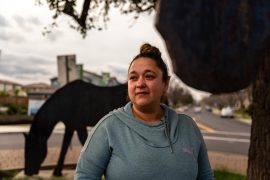U.S. Medical Schools See Large Influx of First- and Second-Generation Immigrants
U.S. medical schools in the last two decades have "seen a huge influx" of students who are first- and second-generation immigrants, the Washington Post reports.
According to the American Association of Medical Colleges, the percentage of medical school graduates who consider themselves white -- which includes a moderate number of ethnic Persians whose families left Iran during the 1979 revolution and a smaller number of individuals whose families more recently left Eastern Europe or the former Soviet Union -- has decreased from 85% in 1980 to 64% in 2004. During the same period, the percentage of medical school graduates from Asian backgrounds increased from 3% to 20%, with Indians and Chinese the two largest subgroups, and the percentage of graduates who are black -- which includes an undetermined number of individuals whose families recently left Africa, many from Nigeria and Ghana -- also increased.
Milford Foxwell, a physician and dean of admissions at the University of Maryland School of Medicine, estimated that almost half of black students at the school have recent ties with Africa. "We are seeing more and more kids of foreign-born parents, especially in the last eight to 10 years," Foxwell said.
The issue is a "touchy subject in the black medical community," the Post reports. Albert Morris, a diagnostic radiologist and president of the largely black National Medical Association, said that some black medical students have told him "people were coming in and getting slots that they thought should be going to African-Americans." However, Morris added, "We are happy to see doctors who are ready to treat minority populations, no matter their nationality."
Impact on Practice of Medicine?
Whether the changes in the population of medical school students will affect the practice of medicine in the U.S. remains uncertain, but some evidence indicates that a "diverse student body may be more attuned to disparities in medical care than a homogeneous one," the Post reports. For example, a 2004 study found that Asian, black and Hispanic medical school students were more likely than white students to believe that the U.S. health care system often "treats people unfairly" based on race, ethnicity, health insurance status, income or ability to speak English (Brown, Washington Post, 6/1).






